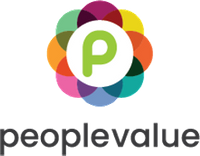Five ways to assess if a benefits programme is up to scratch

So how do you know whether your benefits programme is still right for your workforce? Here are five ways you can take a step back, assess the success of your scheme, and ask some key questions that will identify whether your offering is up to scratch.
- Look at your content
Offering a good range of benefits will increase the likelihood of employees engaging with your scheme. It’s also a key indication that you’re using a good benefits provider. Are you offering your employees variety?
A comprehensive library of offers, discounts, resources (and more), complements the diverse nature of a workforce and ensures that there’s something for everyone to use and enjoy. If what you’re offering is very limited, you’re not going to get optimal engagement with your benefits scheme because there simply isn’t enough to interest your employees.
Everyone in your business should be able to log into your benefits platform and find something that directly appeals to them. So, when considering whether your benefits programme is right for your workforce, make sure you evaluate just how extensive the range of content is. - Analyse your communications
Communications are the lifeblood of your benefits scheme and will actively drive engagement across your business. Whether you’re using a benefits provider or you’re doing everything in-house, you need to ensure that key messages about your scheme are delivered and general awareness is raised on a regular basis and in an effective way.
What communications channels are you currently using? A multi-channel approach is optimal so that employees for all areas of your business are targeted. This means you shouldn’t solely rely on email to deliver messages to your employees. While emails are effective, look at open rates, click rates and see whether there is any way you can optimise them to be more engaging for your employees.
Whether your employees work remotely or are largely ‘offline’ in their day-to-day roles, benefits communications should be tailored to the nuances of your workforce because only then will they be effective in getting employees on board with your benefits scheme. - Consider programme accessibility
In today’s culture, most people have access to technology wherever they go so they can get to the information they need. With so much online content to compete with, a benefits programme that is user-friendly and optimised for any device is key.
Think about how your employees currently access their benefits. Can they do it on the go as well as at home? How easy is the log in process? For optimal engagement you need an optimal user experience for your employees.
Convenience is critical and can have a huge impact on the take-up of your scheme. If you have concerns about the number of registrations or log ins your benefits platform has, perhaps consider how you can streamline the login process or improve the platform for use on mobile, tablet and desktop devices. - Monitor your stats
Reporting should not only give you an insight into how your benefits programme is performing, it can help you make improvements too.
Your Management Information should provide you with a detailed view on key measures that identify usage and demonstrate what benefits are popular amongst employees, and which are not. If you’re using a benefits provider, you should be provided with regular reports which will easily allow you to analyse the success of your programme.
Looking at programme activity in general as well as investigating trends in more detail will give you a clear view on how you can make improvements to your benefits. Perhaps a specific department is not engaging with your programme – you can quickly identify this issue and make necessary actions to rectify this problem. - Ask your employees
Benefits are a great way to boost your employee value proposition, but to add the most value to your business, they need to be relevant to your employees. If your benefits programme isn’t matched to your employees’ needs and interests, they won’t be inclined to use it. The result will be low levels of engagement, which will inhibit your ability to meet your scheme objectives.
So, to ensure you’re delivering valuable benefits to your employees, collect their feedback and welcome their input. Regular pulse surveys facilitated through your benefits platform will allow you to maintain a good level of knowledge on how you’re doing. You could stick to simple questions that gauge how happy your employees are with their benefits, but to get a greater level of insight, ask more detailed questions to understand what specific improvements you should make to your programme.
After looking at these five different aspects of your benefits programme, you will understand what you need to do to ensure that what you’re delivering has the most positive impact on your employees and delivers the best value.
The author is Matt Snare, Sales and Marketing Director at peoplevalue.
This article is provided by peoplevalue.
Supplied by REBA Associate Member, peoplevalue – The Employee Engagement Company
We are a leading provider of employee reward&recognition, benefits delivery&wellbeing solutions.







